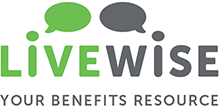Glossary
Deductible
The amount you have to pay out-of-pocket for medical expenses before the insurance company will cover any benefit costs for the year. If your deductible is $2,000, your insurance plan will begin to help with payments once you’ve reached that amount. Review your plan to see which expenses count toward your deductible. Remember, in-network preventive care visits are always 100% covered.
Out-of-Pocket Maximum
The most you would possibly pay out-of-pocket for covered services in a year. Once you reach your out-of-pocket maximum, your plan covers all eligible expenses. This does not include your premiums.
Premium
This is the base amount you pay every month through a payroll deduction for healthcare coverage, whether or not you use the insurance.
Co-Insurance
The cost share between you and the insurance company. Coinsurance is always a percentage totaling 100%. For example, if the plan pays 80%, you are responsible for paying the remaining 20% of the cost. The coinsurance applies only once the deductible has been met.
Copay
A flat fee paid to your provider at the time of service. You may spend more once you’re there (as an example, additional tests, labs, etc.), but regardless, you still have to pay the flat fee. You might also pay copays for prescription drugs.
Claim
A medical IOU. When you visit providers, they will submit claims to your insurance company for the services you received (remember the tests and labs mentioned above?). Once your insurance pays its share, you’ll receive a bill for the rest.
